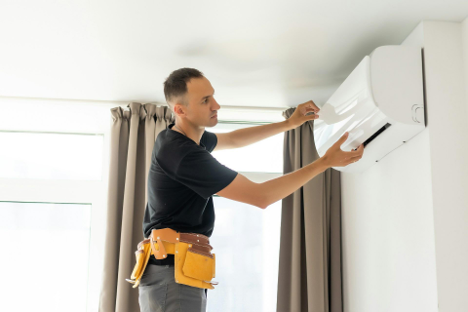
Cleaner indoor air doesn’t need a full mechanical overhaul. For schools and aged care, smaller fixes can create real improvements in air quality. No need to pull out ducts or install new systems. A few smart adjustments go a long way, especially in buildings that weren’t designed for high air exchange.
Identify what can be added, replaced, or shifted without halting daily operations.
Before investing in anything new, look at the current setup. Most buildings have HVAC systems built for temperature. Start with checking whether vents are clean and operating on a schedule that supports fresh air flow throughout the day.
If vents and ducts haven’t been inspected recently, that’s the place to begin. Mould and lint build-up can block flow and cause bad air recirculation. A quick check of return vents also helps. If furniture or storage boxes are blocking them, air doesn’t move the way it should.
Next is the filter. Many standard systems run with low-grade filters meant to stop large debris. However, higher-efficiency options can often be slotted in without needing new hardware.
Not all air filters work the same. Some only trap visible dust. Others catch pollen, dander, and particles smaller than a hair’s width. The trick is choosing a filter that’s compatible with the existing system but rated for higher performance.
In places like schools and care facilities, airborne spread from coughs, sneezes, or even high humidity becomes an issue. Filters with higher MERV ratings (without choking airflow) help capture more of the stuff you don’t want floating around.
That’s where product choice matters. Many options under air filters Australia suppliers now focus on public-use environments, which means better materials, better catches, and lower maintenance.
Before investing in purifiers or anything plug-in, think about air flow itself. Cross-ventilation is a natural fix that costs nothing. Open windows and doors for short, frequent periods to flush the space out. Five-minute cycles during breaks or changeovers do more than hours of low-speed filtering.
If windows don’t open or the space has no cross-breeze, that’s when extra gear makes sense. But without a fresh air loop, adding machines is only part of the job.
Portable air cleaners help in high-traffic rooms with no natural air movement. But not all purifiers are built for the same thing. Some are better at odour. Others remove fine particles.
Choose units that list the Clean Air Delivery Rate (CADR) clearly. Then, match that number to the room size. A good rule of thumb is to run a cleaner that’s slightly oversized for the space, especially in rooms with poor airflow.
Place it away from walls and furniture. Let it pull and push air across the room, not just in one direction.
To improve indoor air without gutting the system:
Stale air is also about what people breathe out. High carbon dioxide levels make a room feel stuffy. They also affect how well people focus. For classrooms or open-plan offices, this becomes an issue of energy and attention.
Low-cost CO2 monitors can show when the air needs refreshing. If readings spike during normal hours, it’s a clear sign the room needs better flow. This guides when to open windows or turn up mechanical fans.
The best changes only work if they’re maintained. A weekly air check routine doesn’t need to be complex. One person with a checklist can do it in under ten minutes. Walk the space. Look at vents, smell the air, check the filter schedule, and make note of any hotspots.
If filters are changed regularly and airflow stays unblocked, even older buildings can deliver a clean and breathable indoor environment. Without touching the HVAC system, that alone makes a difference.